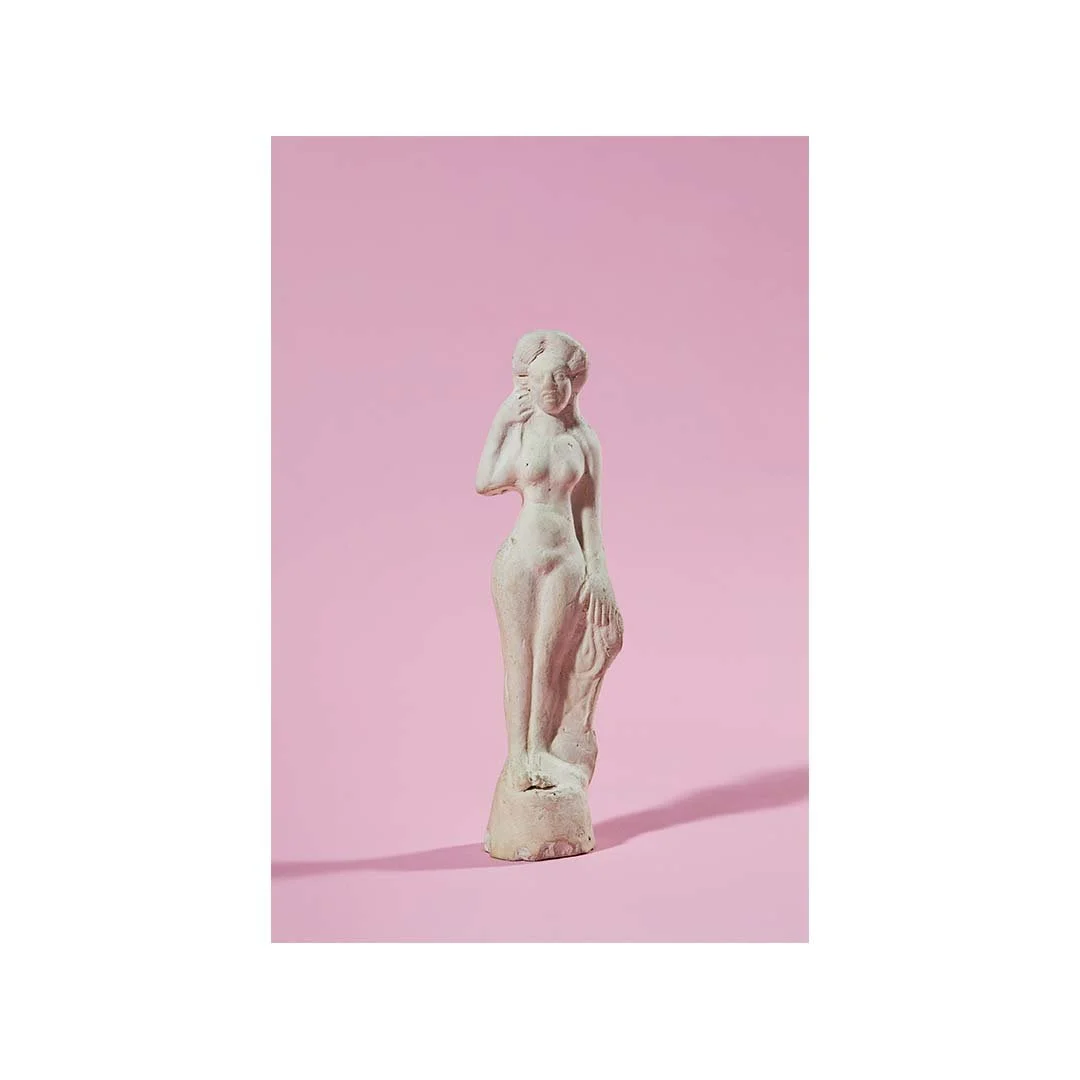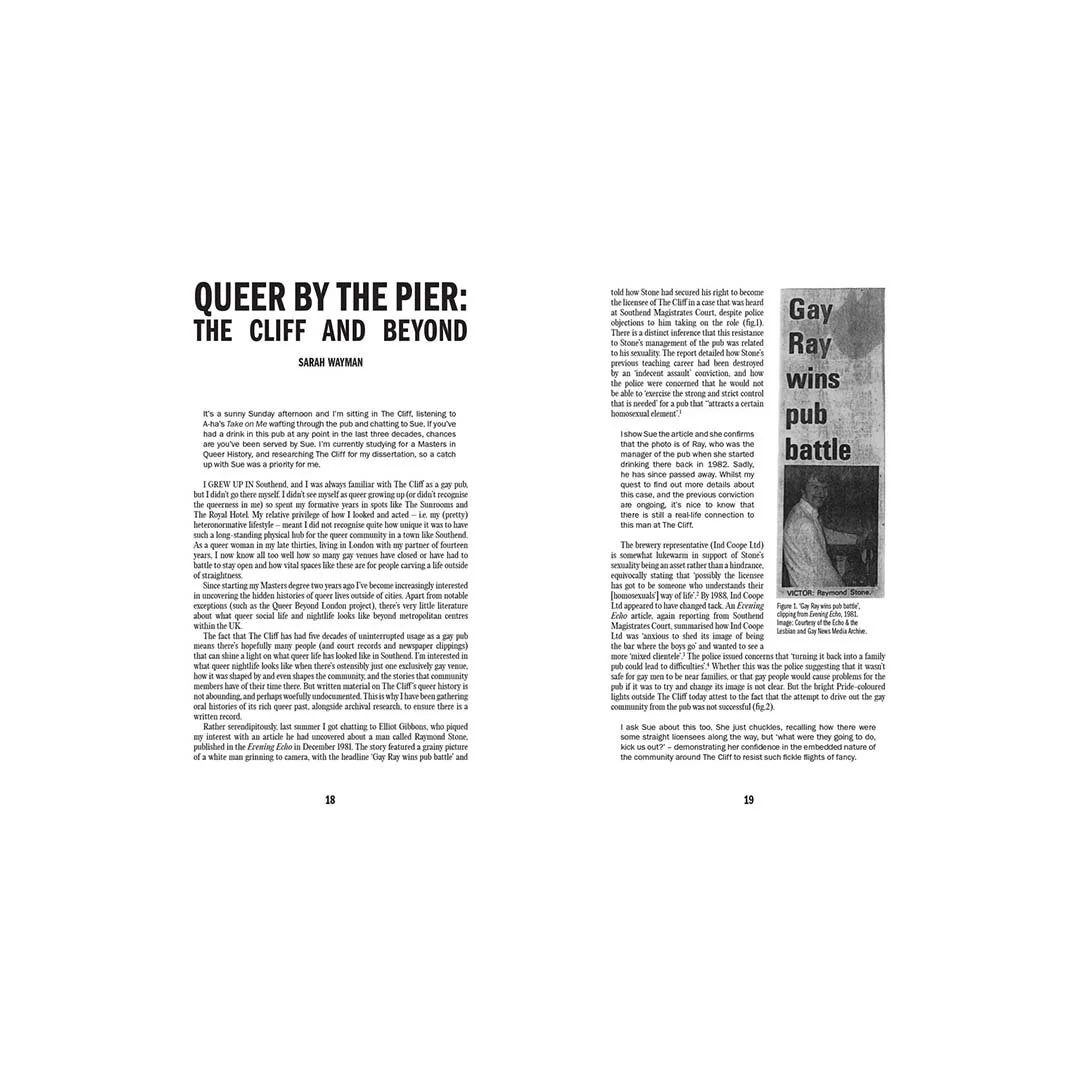Southend's Twilight Worlds
Southend’s Twilight Worlds
‘Southend’s Twilight Worlds’ uncovers a complex and stimulating history of marginalised identities within the city of Southend-on-Sea. It consists of a public exhibition, a new film commission by Amy Pennington, and a publication, alongside an events programme and youth club.
The project and its title are inspired by an article published in Southend’s Evening Echo following the passing of the Sexual Offences Act in 1967. The article’s author, Louis Blake, penned an investigation into the borough’s twilight world and the three to four-thousand “men in fear” who haunted it. He interviewed many of these so-called “twilight men” of Southend, often highlighting the violence and apprehension most experienced due to their sexuality, despite the introduction of “well-meaning” laws. Blake also noted how some of these men discriminated against queers of colour.
Over the past decade or so, there has been an explosive impetus to unearth queer histories that do not continue to centre the stories of urban and white gay men. To rethink Southend’s “twilight world” is to begin to address the lack of accessible queer and alternative histories within the city from an intersectional perspective.
The exhibition at the pop-up TOMA Project Space will display a series of archival clippings, objects from Southend Museums’ social history collection, alongside new and existing artworks by contemporary artists. The Agency of Visible Women will present their publication A Snapshot of Southend as a Cultural Environment for Womxn (2019). Sunil Gupta will re-present photographs from his Trespass 3 (1995) series, originally commissioned by Focal Point Gallery and Essex County Council. Ruth Hazel is going to design and make new textile patches, reflecting on being queer in Southend. Josephine Melville, Founder of the South Essex African and Caribbean Association, exhibits a steel pan drum to create an awareness around the history of the instrument and showcase how playing steel pans can become a method of community building. George Morl’s painting Disposition of Digital Youth(2018) explores how significant developments in radar technology within Southend led to apps like Grindr and questions its implications upon queer spaces. Scottee presents a text-based work titled Most Homosexuals are Incredibly Dull (2021). Lu Williams will design an alternative historical timeline including events specific to Southend which will then be gifted to Southend Pride for future events.
In Amy Pennington’s new film commission, they will be dragging up to become a regional television reporter, exploring a local piece of queer history during the era of Section 28 and the AIDS crisis. Drawing upon the media scandal headlined “GAY SANTA GETS SACK” by The Sun newspaper in 1986, Pennington will seek to find out about the actor Danny Ford who was presumably dismissed from his role as Santa Claus within the now lost Keddies department store in Southend. With the film they draw upon a range of references, from Jean Carlomusto’s film L Is For The Way You Look (1991), to a workshop hosted by Amy with local residents held in late May. Pennington has previously delivered commissions for the likes of Estuary Festival, TATE Liverpool, Battersea Art Centre, PEER Gallery, and South London Gallery.
The ‘Southend’s Twilight Worlds’ publication will compile these previously obscured histories to ensure they are celebrated long into the future. Justin Bengry will reflect on the proliferation and necessity of localised queer history projects in recent years. Rose Cleary’s piece will respond to the rebranding of Southend following the borough gaining city status. Merline Evans will present the Romano-British Venus figurine housed within the Southend Central Museum as an artefact of local queer history. Elliot Gibbons’ text explores how a late Derek Jarman painting features the previously mentioned news article on a local scandal at the historic department store Keddies. Theo Gordon writes on Sunil Gupta’s Trespass 3 series and its contextual underpinnings. While Elsa James presents her spoken word poem Words for Essex, calling for a future Essex which thoroughly embraces difference. Vittorio Ricchetti reflects on the until recent lack of objects from marginalised identities within Southend Museums. Sarah Wayman will write on her current oral history project exploring the legacy of the local queer pub The Cliff. The publication also features interviews with UK Black Pride and Southend Pride, alongside a personal reflection by Josephine Melville on setting up the South Essex African and Caribbean Association.
‘Southend’s Twilight Worlds’ is accompanied by a series of activities designed to deepen our understanding of the vibrant histories of marginalised identities within Southend-on-Sea. This will consist of three public workshops given by exhibiting artists, a series of public tours and readings groups, alongside a fortnightly youth club for a group of young people aged 16 to 25. If you know anyone who would be interested in joining the STW Youth Club, please email Elliot on: southendstwilightworlds@gmail.com.
‘Southend’s Twilight Worlds’ is curated by Elliot Gibbons and produced in partnership with TOMA (The Other MA), The Old Waterworks, Grrrl Zine Fair, Southend Pride, Metal Southend, Focal Point Gallery, Southend Museums and Essex Cultural Diversity Project, and is made possible with funding from Arts Council England and Essex Heritage Trust.
Find out more on www.southendstwilightworlds.com and/or follow the project on Instagram @southendstwilightworlds




